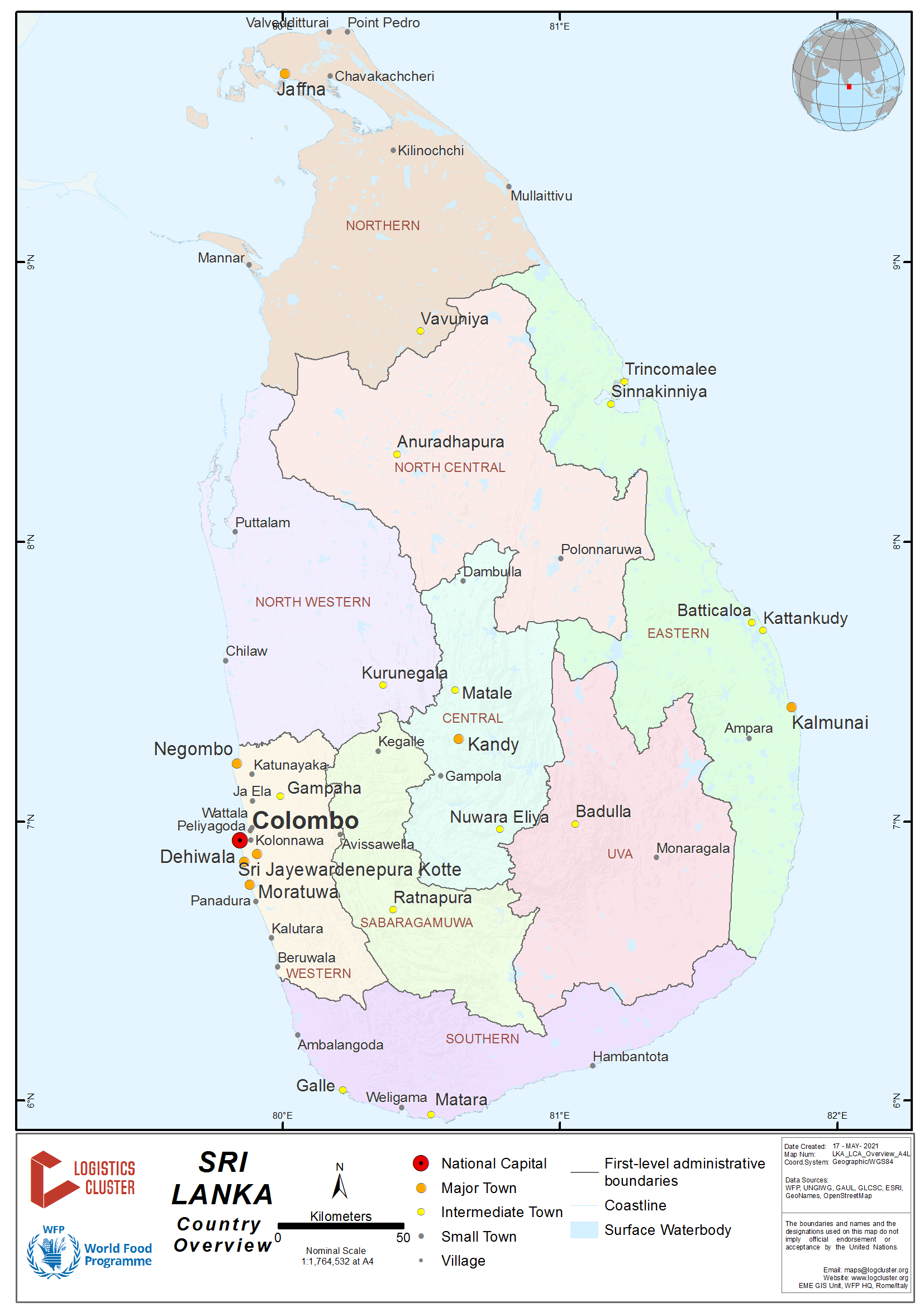Sri Lanka - 2 Logistics Infrastructure
Sri Lanka’s logistics sector has been steadily growing and evolving, thanks to the country’s strategic location along key shipping routes, its investments in transportation infrastructure, and its favourable regulatory environment. Sri Lanka has the potential to serve as a transhipment hub in South Asia, where multiple shipping lines consolidate and distribute cargo to various destinations. This position allows Sri Lanka to maximize the benefits derived from free trade agreements such as the South Asian Free Trade Agreement (SAFTA), as well as trade agreements with Singapore. Additionally, the country’s participation in the Generalized System of Preferences (GSP) further enhances its advantageous trade position. Sri Lanka has made notable improvements in the 2023 global Logistics Performance Index (LPI), moving up from 92nd place in 2018 to 73rd place in the 2023 index (World Bank, 2023), in which the country has seen improvements in infrastructure, logistics competence, timeliness, tracking and tracing, and international shipments rankings, but experienced a decline in customs ranking, highlighting the need for reforms in customs procedures and regulations.
The logistics sector in Sri Lanka accounts for approximately 2.5% of the country’s GDP, equivalent to around USD 2 billion, and the industry provides full-time direct employment to over 40,000 people. The country’s freight and logistics market, valued at USD 4.4 billion in 2023, is expected to exhibit a compound annual growth rate (CAGR) of more than 4% from 2023 to 2028.
A significant part registered service providers in Sri Lanka’s freight and logistics market (around 70%) are local companies, while the rest are multinational enterprises. Currently, there are 130 shipping agencies and 120 freight forwarders affiliated with associations, along with over 500 companies registered with the Merchant shipping Secretariat (MSS), which includes clearing agents as well.
Sri Lanka possesses a well-developed and extensive port network that plays a vital role in the country’s logistics industry and economic sector, with 6 major ports strategically positioned along the country’s coastline. There are a total of 22 airports that serve both regional and international destinations in the country, out of which 5 function as international airports, while the remaining airports primarily enhance domestic connectivity within the country. Sri Lanka has a well-established road network that serves as the primary mode of transportation within the country. The country’s railway network is passenger oriented. The water bodies in Sri Lanka are underutilized for passenger and goods transportation, although there is an extensive network of inland waterways. The storage and warehouse market in Sri Lanka is experiencing growth and demand due to the country's developing economy. Rice milling plays a significant role in the country’s agribusiness sector, with over 7,000 mills dotted across the country.
In the future, Sri Lanka has plans to transform into a multidimensional hub by providing integrated services and facilities to enhance efficiency and capture more business opportunities. Key priorities involve developing physical, telecommunication, and information technology infrastructure between the air and seaport facilities.
